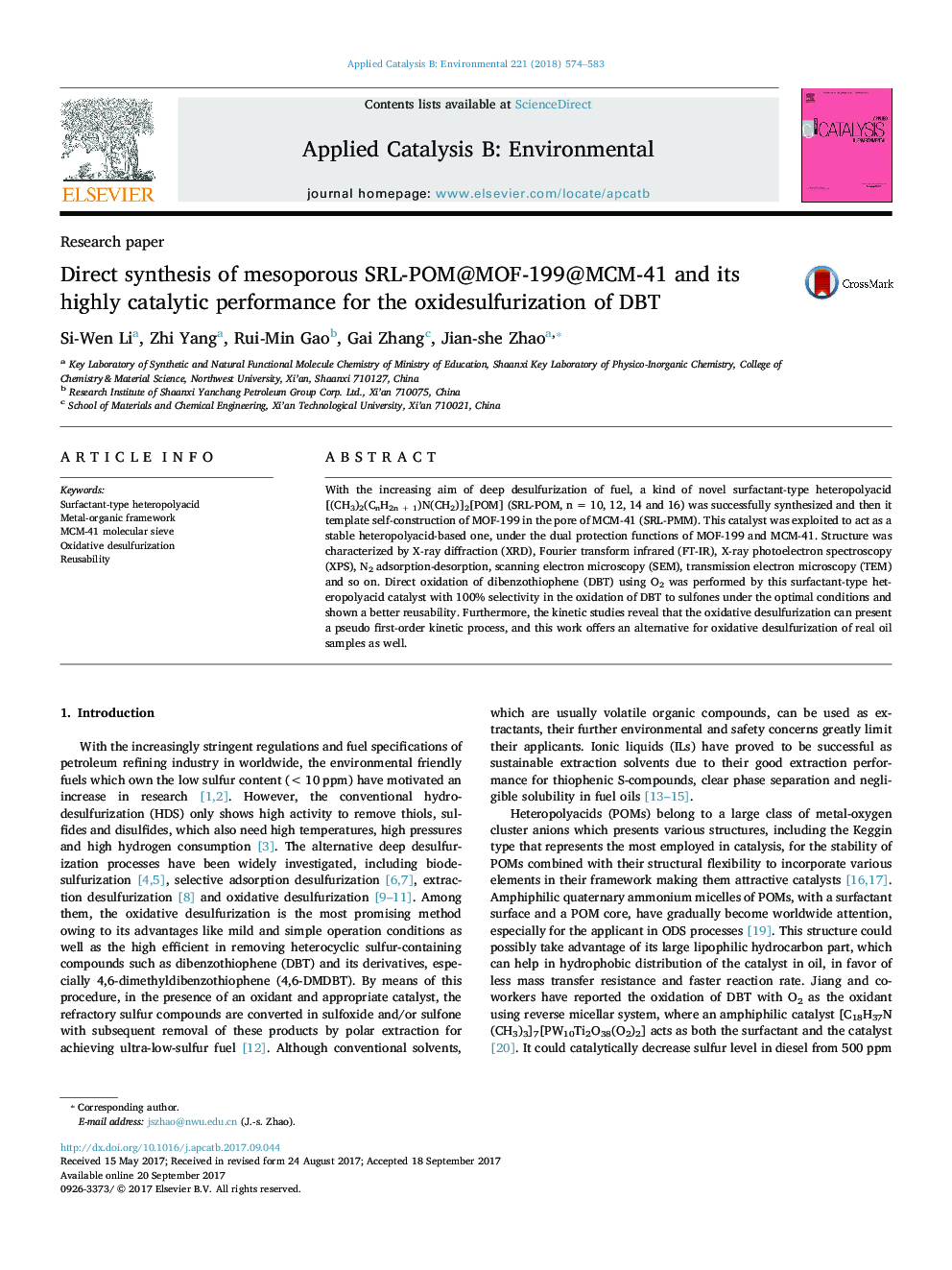| Article ID | Journal | Published Year | Pages | File Type |
|---|---|---|---|---|
| 6453502 | Applied Catalysis B: Environmental | 2018 | 10 Pages |
â¢Surfactant-type heteropolyacid supported in dual-function materials was synthesized.â¢Catalytic behavior of samples for oxidation of DBT was investigated.â¢Stability is mainly correlated with MOF-199 and MCM-41.â¢The catalyst can be easily recovered and reused.
With the increasing aim of deep desulfurization of fuel, a kind of novel surfactant-type heteropolyacid [(CH3)2(CnH2n + 1)N(CH2)]2[POM] (SRL-POM, n = 10, 12, 14 and 16) was successfully synthesized and then it template self-construction of MOF-199 in the pore of MCM-41 (SRL-PMM). This catalyst was exploited to act as a stable heteropolyacid-based one, under the dual protection functions of MOF-199 and MCM-41. Structure was characterized by X-ray diffraction (XRD), Fourier transform infrared (FT-IR), X-ray photoelectron spectroscopy (XPS), N2 adsorption-desorption, scanning electron microscopy (SEM), transmission electron microscopy (TEM) and so on. Direct oxidation of dibenzothiophene (DBT) using O2 was performed by this surfactant-type heteropolyacid catalyst with 100% selectivity in the oxidation of DBT to sulfones under the optimal conditions and shown a better reusability. Furthermore, the kinetic studies reveal that the oxidative desulfurization can present a pseudo first-order kinetic process, and this work offers an alternative for oxidative desulfurization of real oil samples as well.
Graphical abstractDownload high-res image (213KB)Download full-size image
